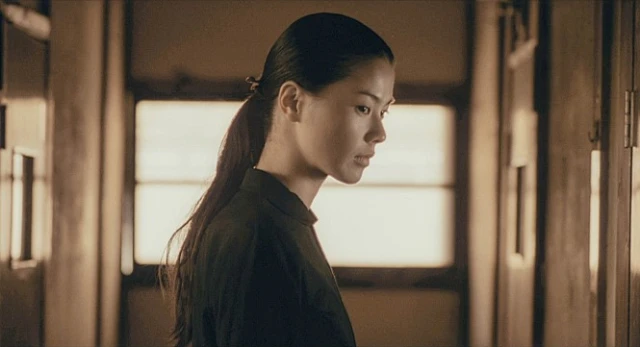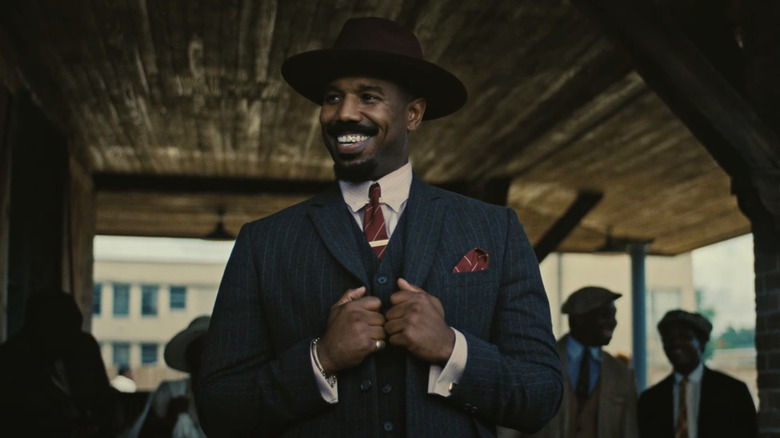Social Mortality in Maborosi (1995)
- Arm Jeungsmarn
- Dec 17, 2021
- 6 min read
In many ways, funerals are a strange ritual.
Like birth, rites of passage, marriage and retirements, funerals mark a point of transition in the life of an individual. What makes funerals stand out is the fact that the individual for which the ceremony has been organised for, could not participate in it.
Sarawut Hengsawad, a Thai humanist writer, once suggested that despite appearing to centre around the dead, funerals primarily serve to comfort the living. After all, if sacred sermons and other acts of ritualistic Necrophoresis are said to help the dead pass on to the afterlife, why do we – a society that increasingly subscribes to the scientific secular conception of death – continues to perform them so religiously?
From a social and anthropological perspective, funerals provide a social space in which friends and relatives of the dead can share their grief and exchange emotional supports.
Funerals are not for the dead, but for those left behind.
Death is not merely a loss of an individual's consciousness; it is also the removal of a human being from a social group. The loss of a person from a social unit – whether a family, a friend group or a community – can be traumatic. The self is composed not merely of one’s individual attributes but the interpersonal relationship that suspends each individual self in a larger web of social structure. So, to lose someone is to see a part of one’s self suddenly severed. What is left is a deep and lasting wound.
In Maborosi (1995), we follow a woman whose husband’s life was suddenly cut short by a mysterious act of apparent suicide. But to Yumiko, her husband Ikuo did not seem beset by sadness or woes. From her perspective – into which director Hirokazu Kore-eda nestles the audience – her husband was happy. Their lives may be squalid but they were content. They had good friends. Their conversations were filled with quirky moments of connection and shared love.
And then, without any warning, Ikuo decided to walk in front of a speeding train. Yumiko learned of his death when two police officers visit her in the middle of the night.
The audience was spared the image of Ikuo’s most certainly mangled corpse. Kore-eda did not want to shock and horrify his audience. He wanted us to be with Yumiko, to feel her shock and confusion. Interestingly, the scene where Yumiko learned of Ikuo’s death deliberately excluded her face. Kore-eda was certain that the audience would understand Yumiko’s feelings without registering her facial expression. He understood that losing a loved one is a universal experience.
But of course, the death of Ikuo was particularly shocking. It was sudden and traumatic. Most importantly, it was without reason. Yumiko was left haunted by the guilt of not knowing what her husband was going through.
This was the gist of the film, the message Kore-eda wanted to get across.
Maboroshi is Kore-eda’s first feature film. And from the beginning, we can see he is deeply interested in what it means to be human. He points his camera at that which seems unfilmable: humanity itself. He does not try to explain it, rather allowing humanity to reveal itself in moments of human relationships.
In direct contrast to Charlie Kaufman’s metaphorical and dream-like portrayal of mortality, he presents mortality as a fact of life. Hence, he chose not to look at mortality from the perspective of Ikuo. Instead, he explored the effect of Ikuo’s death on Yumiko – the one left behind, the embodiment of the social impact of losing a person.

(Image credit: Seongyong's Private Place)
Yumiko spends the next months of her life in a state of quiet depression. It was never explicit. As a character, she hardly ever spoke. She never expressed her pain to anyone around her. While we are forced to experience the story from her perspective, we were never allowed to peer inside her mind. Makiko Esumi’s performance exudes an opaque solemnity, culturally valued in women living in Japanese culture. But beneath that solemnity lies a great sea of pain, to which the audience was denied visibility and comprehension for most of the film.
It is perhaps Kore-eda’s intention to look at the silent and invisible effect of death on society and interpersonal relations. To an extent, this was culturally specific. Japanese culture values the notion of emptiness and acceptance, rooted in Zen Buddhism and aspects of Shinto ideology. But it is also universal, even in the more individualistic and expressive culture of the western world, many people respond to death by suppressing its effects and putting up an inscrutable exterior. The problem with this, of course, is that it denies the individual the social support necessary to cope with the loss of a loved one.
After a few years, Yumiko remains mostly silent and solemn. She has agreed to an arranged marriage with a widower named Tomio. She moved to a seaside town where Tomio lives. She became part of that new community. And while we may expect the arranged marriage to end in dramatic fights – due to usual narrative structures found in western films – things went differently this time. Like a number of women throughout Japanese history, Yumiko came to enjoy her new life. This is of course not an indication of Kore-eda’s endorsement of such practice. Arranged marriage had resulted in so much abuse on women throughout history. But in this case, perhaps because of Tomio’s sensitivity and respect for Yumiko, the relationship worked.
Yumiko began to smile. Not because she had remarried but because in this seaside town, but perhaps she found herself a new community. The wound left in her after the death of Ikuo was being healed by the kind-hearted acceptance of the people around her. More importantly, her son was able to find a new home and even a new kind of father figure in the form of Tomio. One issue remains. Tomio has yet to confront the death of Ikuo, the person she truly loved. While her relationship with Tomio was physical, consensual and emotional, it was a socially ascribed relationship. It was not the intense and natural love portrayed in the beginning between her and Ikuo. The wound may be healing but the gap left by is not being filled.
Here, Kore-eda is more interested in the relationship between the individual and the social structure than the mere experience of a given person. In the story of Yumiko, he finds the intersection of personal trauma, social structure and cultural mandate. He passes no judgment on these but portrays every facet of their impacts. One day, Yumiko returns to the town where she used to live with Ikuo and was reminded of the shock and confusion she felt after the death of Ikuo. The unexplained nature of his suicide seems allegorical of the sudden and meaninglessness of death to those left behind. In this part of the film, Kore-eda lets the social context of meaningless death speak for itself, through the recurring grief of Yumiko – a condition from which it seems impossible to be free.
The waves of Wajima shore crashes in swells and breakers along the rough edges upon Yumiko walks. When she returned to the seaside town, Yumiko saw a funeral procession and began to follow it. When Tomio caught up with her at the seaside, she told him in the first moment of emotional breakdown that she only wanted to know why? Why did Ikuo kill himself? Tomio could not find an answer. He himself could not yet fully reconcile with the loss of his own spouse. He simply reminds Yumiko of an anecdote told to him by his father, of light – a will o’ the-wisp – that seems to draw people to their death. Perhaps something had drawn Ikuo to his death.
Indeed, that is the best explanation those left behind could come up with. Something had drawn their loved ones to death. Something so vague and indescribable it wouldn’t do anyone any good to try to seek it.
By the end of the movie, Yumiko’s wound is not healed, nor was Tomio. In this film, Kore-eda suggests that the death of a loved one is not something to be healed, something from which one recovers. The self is changed forever in the wake of such loss. Such is the reality of life and its mysterious and unknowable ending. The title of the film, Maborosi – “phantasmic light” – reminds us this much.








Comments